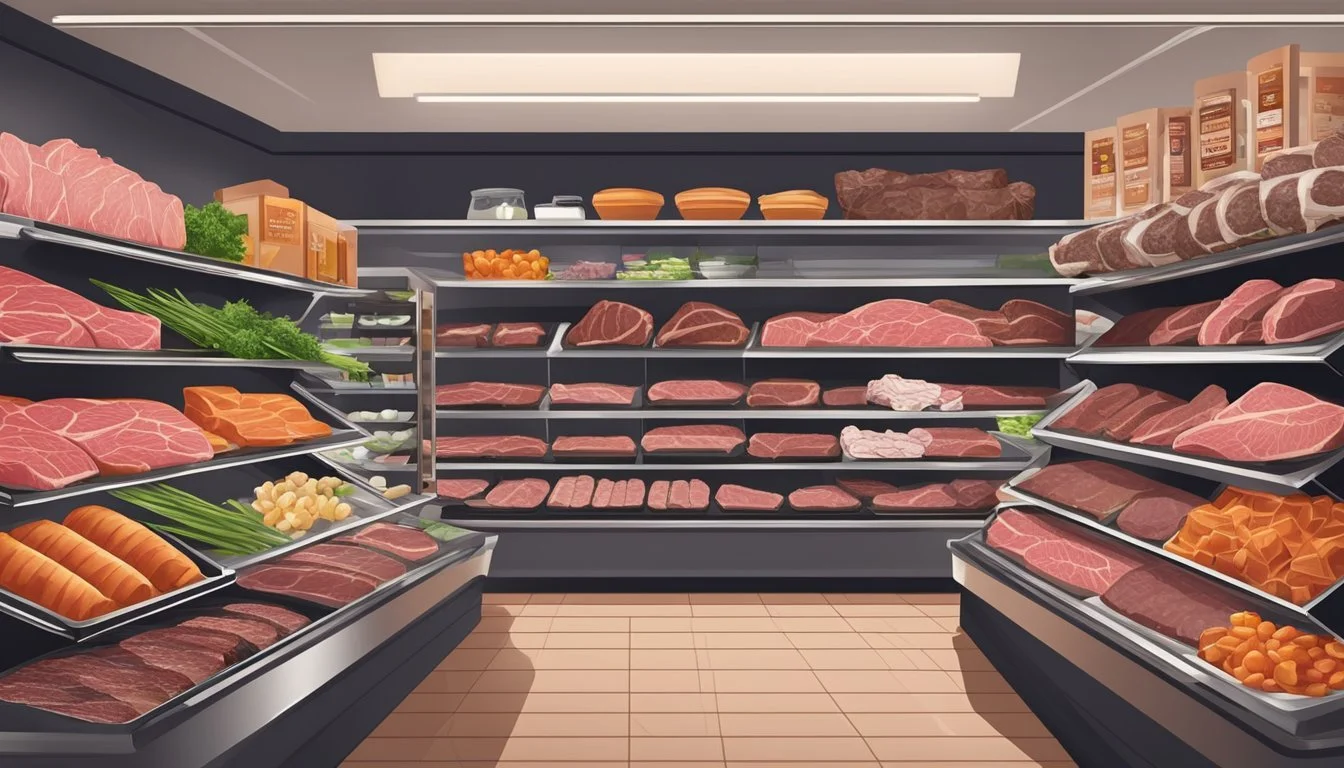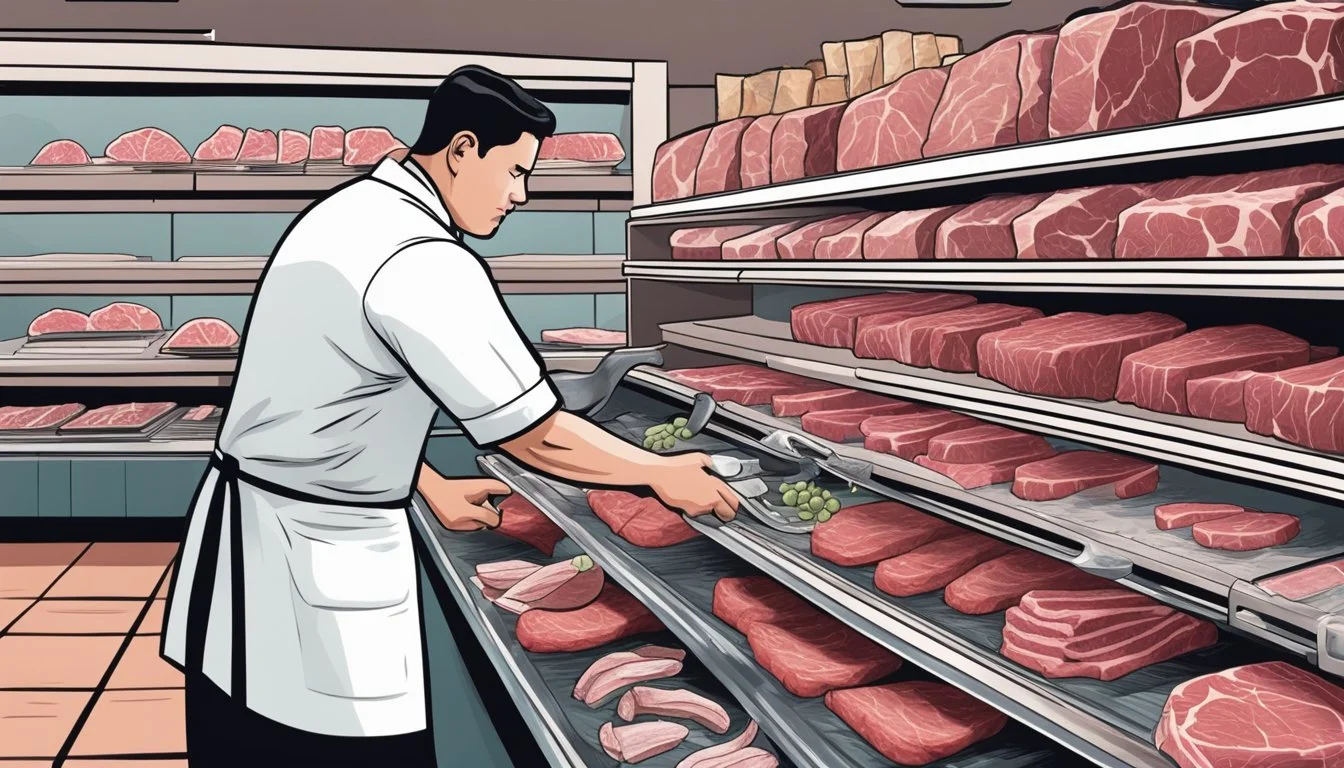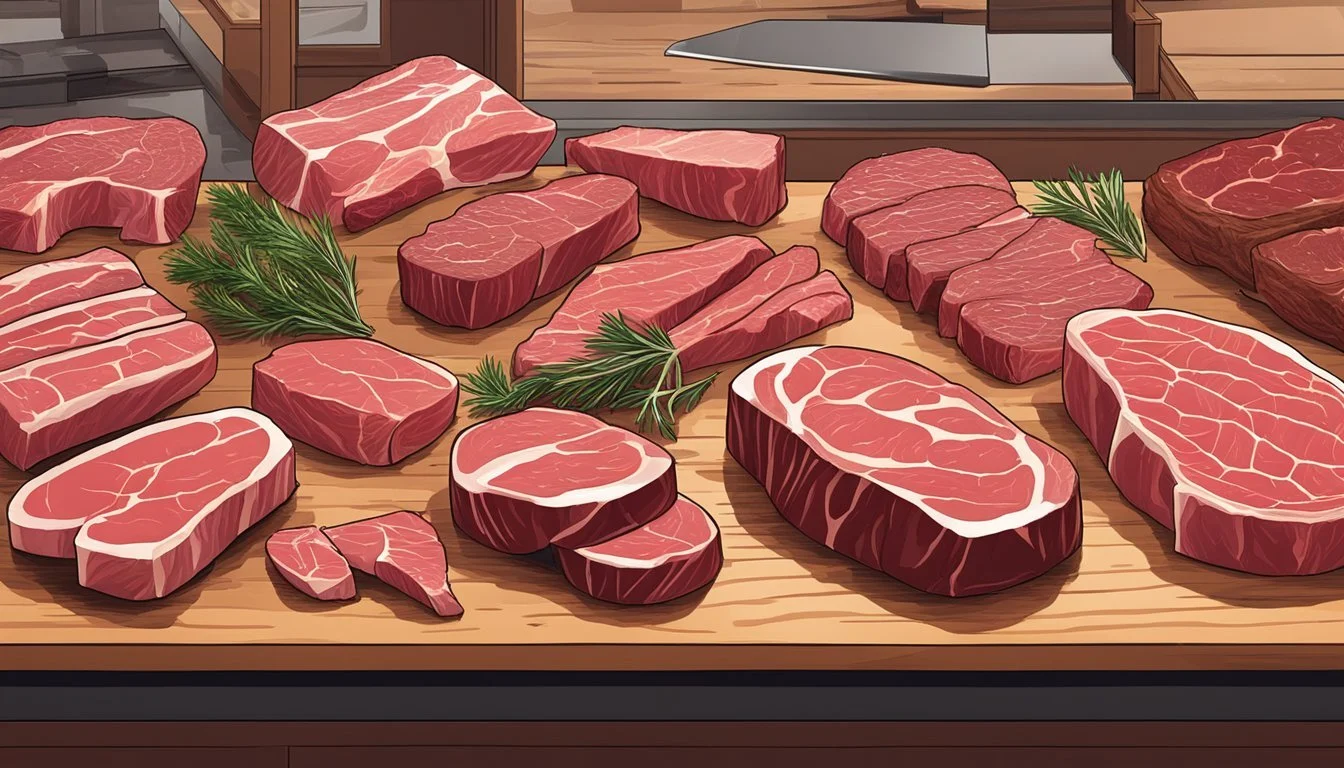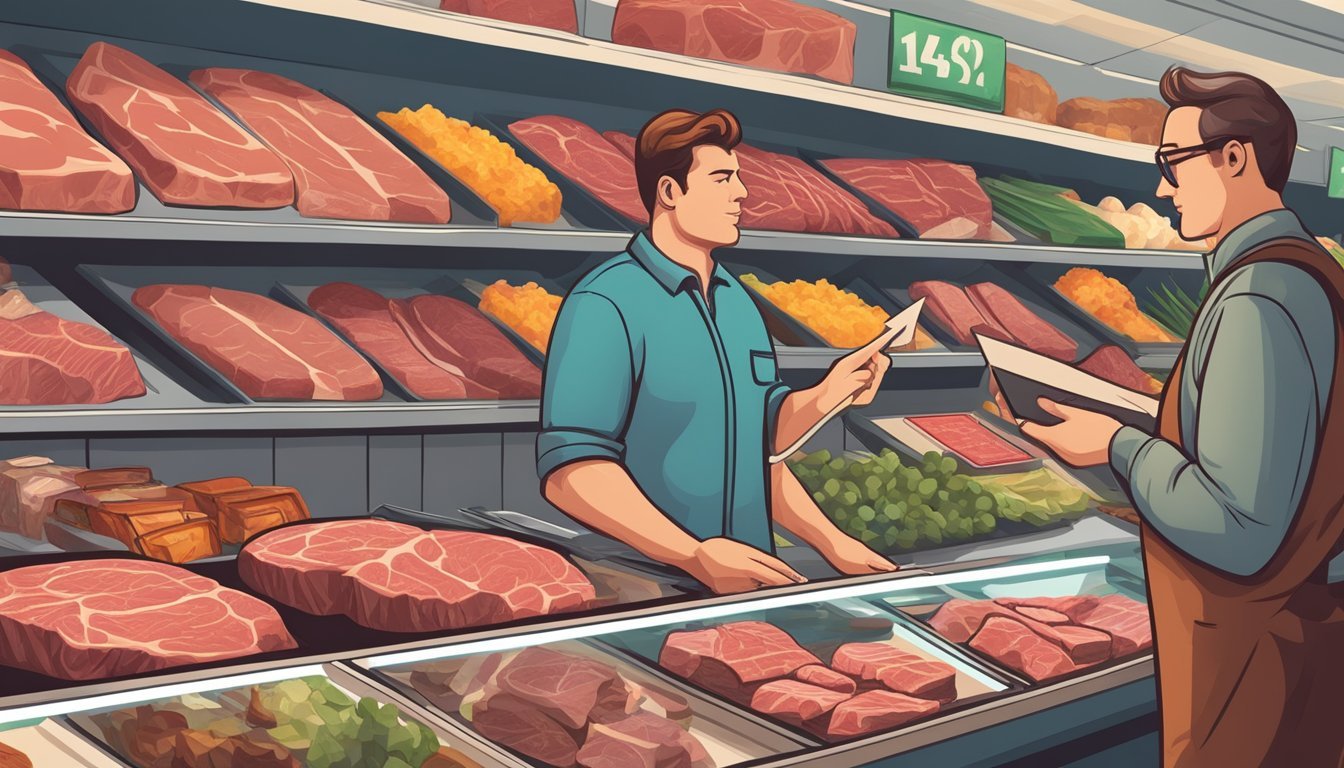Prime Cuts: Finding the Best Grocery Store for Steak Lovers
When it comes to finding the perfect steak, the grocery store you choose can make a significant difference. While many supermarkets offer meat departments, not all are created equal in terms of quality, selection, and expertise.
For those seeking the best steaks at a nationwide grocery chain, Whole Foods Market stands out as a top choice. Their commitment to quality and organic, grass-fed options sets them apart from many competitors. Whole Foods often carries Prime grade beef, which is considered the highest quality available to consumers.
Other grocery stores known for their meat departments include Wegmans and H-E-B. Wegmans, an East Coast chain, offers an extensive selection of meats and knowledgeable staff to assist customers. H-E-B, a Texas-based grocer, is well-regarded for its diverse meat offerings tailored to local tastes. When shopping for steak, factors such as grade, marbling, and sourcing can all impact the final product on your plate.
Identifying High-Quality Steak
Selecting a premium steak involves evaluating several key factors. The grade, marbling, color, and texture all play crucial roles in determining the quality and flavor of the meat.
Understanding Beef Grades
The USDA grades beef based on its quality and yield. Prime, Choice, and Select are the top three grades available to consumers. USDA Prime represents the highest quality, with abundant marbling and exceptional tenderness. It's typically found in high-end restaurants and specialty butcher shops.
USDA Choice is more widely available and offers excellent quality for home cooking. It has less marbling than Prime but still provides good flavor and tenderness. Select grade beef is leaner and may require marination or slow-cooking methods to enhance tenderness.
Some stores also offer their own grading systems. Whole Foods Market, for example, uses a 5-step animal welfare rating for their beef.
Significance of Marbling
Marbling refers to the white flecks of intramuscular fat visible throughout the meat. It significantly impacts flavor, juiciness, and tenderness. High-quality steaks display fine, evenly distributed marbling.
When examining a steak, look for thin, web-like patterns of fat running through the muscle. This indicates superior marbling and promises a more flavorful eating experience. Steaks with little to no visible marbling tend to be less tender and flavorful.
The amount of marbling also correlates with USDA grades. Prime cuts have the most abundant marbling, followed by Choice and then Select.
Importance of Color and Texture
The color and texture of a steak can reveal much about its quality and freshness. High-quality beef should have a bright, cherry-red color when fresh. Avoid steaks that appear brown or have dark spots, as this may indicate age or improper storage.
The texture should be firm and slightly moist. Press the steak gently - it should spring back quickly. If your finger leaves an indentation, the meat may be of lower quality or past its prime.
Look for steaks with a fine, smooth grain in the muscle fibers. Coarse or uneven grain can indicate toughness. The fat should be white or creamy-colored, not yellow.
Varieties of Steak Cuts
Steakhouses and supermarkets offer a diverse array of beef cuts, each with unique characteristics. These cuts vary in tenderness, flavor, and price, catering to different preferences and cooking methods.
Popular Beef Cuts
Ribeye steaks are prized for their rich marbling and intense flavor. Cut from the rib section, they offer a tender, juicy experience. Sirloin steaks, from the rear back portion, provide a good balance of flavor and affordability.
Tenderloin, the source of filet mignon, is the most tender cut but less flavorful. T-bone and porterhouse steaks combine strip and tenderloin sections, offering two textures in one cut.
NY strip steaks, cut from the short loin, have a fine texture and beefy taste. Skirt and flank steaks, from the plate and flank sections respectively, are leaner options ideal for grilling and slicing against the grain.
Cut-Specific Characteristics
Ribeyes excel in flavor due to their fat content, best cooked to medium-rare. Sirloin steaks are versatile, suitable for various cooking methods. Tenderloin cuts like filet mignon require careful cooking to avoid drying out.
T-bone and porterhouse steaks present a challenge, as the strip and tenderloin cook at different rates. NY strip steaks offer a robust beef flavor and respond well to high-heat cooking.
Skirt and flank steaks benefit from marination to enhance tenderness. These cuts are best served sliced thin for fajitas or stir-fries. Each cut's unique traits influence optimal cooking techniques and flavor profiles.
Choosing the Right Grocery Store
Selecting the ideal grocery store for steak involves evaluating key factors like meat department quality, store brand offerings, and overall supermarket standards. These elements can significantly impact your steak-buying experience and the quality of meat you bring home.
Meat Department Excellence
A top-notch meat department is crucial for finding the best steaks. Look for stores with dedicated butchers who can provide expert advice and custom cuts. Wegmans and Whole Foods are known for their high-quality meat counters staffed by knowledgeable professionals.
Examine the display case for cleanliness and proper temperature control. Fresh meat should be bright red, not brown or gray. Check for USDA grade labels, with Prime being the highest quality, followed by Choice and Select.
Marbling is key to flavor and tenderness. Seek steaks with fine, evenly distributed white lines of fat throughout the muscle. Stores like Costco often carry Prime beef at competitive prices.
Store Brand Offerings
Many supermarkets offer their own branded steaks, which can provide good value. Kroger's Private Selection and Safeway's Rancher's Reserve are examples of quality store brand options.
These brands often undergo rigorous quality control and may be sourced from the same suppliers as national brands. They can offer a balance of quality and affordability.
Consider trying different store brands to find your preferred option. Some, like Trader Joe's, focus on organic and grass-fed beef selections for health-conscious consumers.
Supermarket Quality Indicators
Overall store quality often reflects the standard of their meat department. Clean, well-organized stores with attentive staff typically maintain higher standards across all departments.
Look for stores that prioritize freshness and have high product turnover. This ensures the meat hasn't been sitting on shelves for extended periods.
Check for certifications or partnerships with local farms. Stores like Publix often highlight their relationships with regional producers, ensuring fresher products.
Consider the store's commitment to food safety and handling practices. Well-trained staff and visible hygiene protocols are good indicators of a store's dedication to quality.
Price Considerations
Steak prices vary widely between grocery stores and quality grades. Factors like cut, grade, and source impact the cost significantly.
Budgeting for Steak
USDA Prime steaks command premium prices, often 20-30% more than Choice grade. Select grade offers the most budget-friendly option but may be tougher. Many stores price steaks by weight, with ribeyes and filets typically costing more per pound than sirloin or flank steak.
Whole Foods and specialty butchers tend to have higher prices but offer premium and organic options. Conventional supermarkets like Kroger or Safeway frequently run sales on steaks, providing opportunities to save.
Cost vs. Quality Dilemma
Higher prices often correlate with better quality, but not always. Prime grade steaks offer superior marbling and tenderness but cost significantly more. Choice grade provides a good balance of quality and value for most consumers.
Grass-fed and organic steaks typically cost more due to production methods. These options may appeal to health-conscious shoppers despite the price premium. Some budget-friendly cuts like flank or skirt steak can be delicious when prepared properly, offering good value.
Store loyalty programs and bulk purchases can help mitigate costs for frequent steak buyers. Comparing prices across different stores and watching for sales can yield substantial savings.
Preparation and Cooking Tips
Proper preparation and cooking techniques are crucial for transforming a store-bought steak into a restaurant-quality meal. Mastering these skills can elevate your steak experience significantly.
Marinating for Flavor
Marinating enhances the flavor profile of steaks. Choose marinades with acidic ingredients like vinegar or citrus juice to tenderize the meat. Add oil, herbs, and spices for depth.
Marinate steaks for 30 minutes to 2 hours in the refrigerator. Avoid marinating for too long, as it can make the meat mushy.
Pat the steak dry before cooking to ensure a good sear. This step is essential for developing a flavorful crust.
Grilling Techniques
Preheat the grill to high heat for a proper sear. Clean and oil the grates to prevent sticking.
Place the steak on the hottest part of the grill. Cook for 3-5 minutes per side for medium-rare, depending on thickness.
Use tongs to flip the steak, not a fork, to avoid piercing and losing juices.
Let the steak rest for 5-10 minutes after cooking. This allows juices to redistribute, ensuring a more tender and flavorful bite.
Avoiding Common Cooking Mistakes
Don't cook cold steaks. Let them sit at room temperature for 30 minutes before cooking for even heat distribution.
Resist the urge to constantly flip the steak. Turn it only once or twice for optimal crust formation.
Use a meat thermometer to check doneness. This prevents overcooking and ensures food safety.
Rare: 125°F (52°C)
Medium-rare: 135°F (57°C)
Medium: 145°F (63°C)
Avoid cutting into the steak immediately after cooking. Resting is crucial for retaining juices and flavor.
Ethics and Sustainability
Ethical and sustainable meat sourcing has become increasingly important for conscious consumers. Grocery stores are responding by offering more options that prioritize animal welfare and environmental sustainability.
Organic and Grass-Fed Options
Many grocery chains now stock organic and grass-fed beef options. Whole Foods Market leads the pack, offering a wide selection of organic and grass-fed steaks. These products come from cattle raised without antibiotics or added hormones. Grass-fed beef often contains higher levels of beneficial nutrients like omega-3 fatty acids.
Wegmans and Kroger have also expanded their organic and grass-fed beef selections in recent years. These options may carry a higher price tag but appeal to shoppers concerned about health and environmental impact.
Animal Welfare Considerations
Some grocery stores prioritize animal welfare in their meat sourcing. Whole Foods has implemented a 5-Step Animal Welfare Rating system for all fresh meat. This helps customers make informed choices about the treatment of animals.
Trader Joe's requires suppliers to meet specific animal welfare standards. These include providing animals with adequate space and prohibiting the use of growth hormones.
Costco has committed to selling only cage-free eggs and has set welfare standards for its meat suppliers. However, specific policies can vary between different grocery chains.
Aging and Storage
Proper aging and storage techniques are crucial for developing flavor and maintaining quality in steaks. These methods can significantly impact tenderness, juiciness, and overall taste.
Wet vs Dry Aging
Wet aging involves vacuum-sealing fresh meat in plastic and refrigerating it for several days or weeks. This process allows enzymes to break down muscle fibers, increasing tenderness. Dry aging exposes beef to air in a controlled environment, typically for 28-40 days. This method concentrates flavor and creates a more intense, nutty taste profile.
Dry-aged steaks lose moisture during the process, resulting in a more concentrated flavor. The ideal temperature for dry aging is between 34-38°F with humidity levels of 75-85%. Proper air circulation is essential for even drying and preventing spoilage.
Wet aging is more common in grocery stores due to its cost-effectiveness and shorter aging time. Dry-aged steaks are often found in specialty butcher shops or high-end grocers like Whole Foods Market.
Proper Steak Storage
Storing steaks correctly is essential for maintaining freshness and preventing foodborne illness. Refrigerate raw steaks at temperatures between 34-40°F. Place them on the lowest shelf or in a separate drawer to prevent cross-contamination with other foods.
Use a plate underneath thawing steaks to collect any juices. For longer storage, freeze steaks at 0°F or below. Vacuum-sealed packaging helps prevent freezer burn and extends shelf life.
When storing dry-aged steaks, maintain proper airflow to continue the aging process. Avoid storing them with other strong-smelling foods, as the meat can absorb odors. Clean your refrigerator regularly to maintain a sanitary environment for meat storage.
Labeling and Packaging
Understanding meat labels and packaging quality is crucial for selecting the best steaks at grocery stores. These factors provide valuable information about the product's quality, origin, and handling.
Understanding Meat Labels
USDA grades are key indicators of steak quality. Prime grade, accounting for less than 4% of graded beef, offers abundant marbling and superior flavor. Choice and Select grades follow, with decreasing fat content.
Labels also display inspection information, ensuring the meat meets safety standards. Net weight or quantity is shown on pre-packaged products, helping consumers compare prices accurately.
Some labels may include additional details like the animal's diet or breed, which can influence taste and texture. Checking for "sell-by" or "use-by" dates helps ensure freshness.
Packaging Quality and Visibility
High-quality packaging protects steaks from contamination and extends shelf life. Vacuum-sealed packages prevent oxidation, preserving color and flavor.
Clear packaging allows visual inspection of the meat's color and marbling. This transparency helps consumers assess quality before purchase.
Some stores use modified atmosphere packaging, which replaces air with gases to maintain freshness. This method can extend shelf life but may affect the steak's appearance.
Butcher paper wrapping, often used at meat counters, allows for custom cuts but offers less protection than sealed packages. It's best for immediate use or freezing.
Beyond Beef: Alternative Meat Options
Plant-based meat alternatives have gained popularity as protein-rich options for those seeking to reduce their beef consumption. These products aim to mimic the taste and texture of traditional meats while offering nutritional benefits.
Choosing Poultry and Pork
Chicken and turkey serve as lean protein sources with versatile cooking applications. Skinless chicken breast provides approximately 31 grams of protein per 100 grams, while turkey breast offers around 29 grams. Both options are lower in saturated fat compared to beef.
Pork loin and tenderloin are lean cuts that rival chicken in protein content. A 3-ounce serving of pork tenderloin contains about 22 grams of protein. These cuts can be grilled, roasted, or pan-seared for various dishes.
Exploring Exotic and Game Meats
Exotic meats like bison, venison, and ostrich offer unique flavors and nutritional profiles. Bison meat is leaner than beef, with 22 grams of protein and only 2.5 grams of fat per 100 grams.
Venison provides 30 grams of protein per 100 grams and is rich in iron. Ostrich meat contains 22 grams of protein per 100 grams and is low in cholesterol.
Plant-based alternatives like Beyond Meat and Impossible Foods products simulate beef texture and taste. These options typically contain 19-21 grams of protein per serving and are cholesterol-free.







